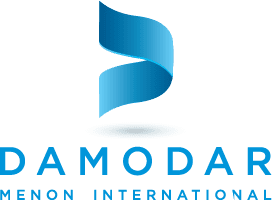Moisture-wicking fabrics are perfect for summer wear as they keep the wearer cool and dry no matter how much they sweat and how humid it is outside. As the temperature surpasses 44° C in many states in the country this year, knitted fabric manufacturers in India can make a huge profit by investing in moisture-wicking fabrics this summer. If you are a fabric manufacturer and are planning to scour this sector, this blog will help you learn more about moisture wicking.
What is Moisture Wicking Fabric?
When a brand claims that its apparel wicks moisture, it means that the apparel is made from fabrics that draw moisture away from the body to the fabric’s outer surface. This results in more dry and comfortable wear, allowing the body to regulate temperature, especially in scorching summer.
Wicking fabrics, ideal for both activewear and sportswear, are increasingly being chosen by cotton buyers for creating everyday attire, undergarments, and bedding materials due to their moisture-wicking properties.
What is the Science Behind Moisture-Wicking Fabrics?
Moisture wicking works on the “capillary action,” a process where any liquid (here, sweat) moves through tiny openings within the fabric due to the cohesion of water molecules in the fabrics’ internal surfaces. For example, place a tube in a tub of water. You will notice that the water level is higher in the tube due to the capillary effect.
During exercise or hot weather conditions, perspiration is drawn from your skin onto your clothes. If your outfit is made from a moisture-absorbing material, like a natural fabric – cotton, then the moisture would be trapped in the fibers, making the cloth feel damp and heavy.
In the case of moisture-wicking fabric materials like polyester, the fibers transport the sweat to the outer layer, applying the capillary action process and keeping the sweat on the surface. Once on top, the sweat evaporates faster, leaving the wearer with a dry, light, and sweat-free finish.
Knitted fabric manufacturers in India improve this process by carefully designing the structure of the yarns using different methods. There are three ways in which we can incorporate moisture-wicking properties into a fabric.
1. Change in Yarn Construction
Wicking yarn is different from regular yarn. While standard yarn has a round shape, moisture-wicking yarn might be flowered or cross-shaped, so they have more space or channels to let moisture pass through.
Natural fibers cannot be made into wicking yarns. Wicking yarn is a synthetic filament and is available only in fabrics like nylon and polyester.
2. Changing the Knitting Structure
Manufacturers use the mechanical wicking or one-way-wicking process to knit fabric into a particular pattern, which forces moisture into the outer layer of the garment. The sweat is drawn from the skin, passed through the spaces within the fabric, and diffused over the outer fabric.
Due to the fabric’s unique pattern of weaving, as soon as moisture touches the fabric, it is immediately absorbed and dispensed. Since the sweat moves upward and outward, the clothes will never feel sticky or clumpy. As the sweat moves to the outer layer and diffuses over a larger area of the fabric’s surface, it will dry the moisture faster.
3. Applying Chemical Treatment
Cotton suppliers can also chemically transform a non-wicking fabric into a wicking fabric. A special chemical finish containing hydrophilic molecules is applied during the dyeing process or when setting the fabric to incorporate the moisture-wicking property.
Once the chemical dries off, the additive attaches to the yarn surface forever, making it hydrophilic.
This process is cheaper than the first two processes. But it isn’t a permanent solution. The chemical may wear off with multiple washes.
Cotton suppliers have made moisture-wicking garments even more efficient for end users by producing finer fibers. The slimmer the diameter, the more fibers you can get in one yarn, and the more channels you will have for moisture or sweat to run up. Some of the top moisture-wicking materials that you can buy and sell at the best price at Damodar Menon International are polyester, nylon, wool, polypropylene, bamboo, and spandex. Rayon and cotton buyers can look for cotton blends if you are into manufacturing low-impact summer wear, like pajamas, t-shirts, and yoga pants.
If you are interested in purchasing moisture-wicking fabrics wholesale, connect with our trading experts. If you are searching for online buying and selling Textile fabric, TEXchange Global serves as the cornerstone for exports and imports, providing a platform for textile companies in India to connect and trade across international markets.
